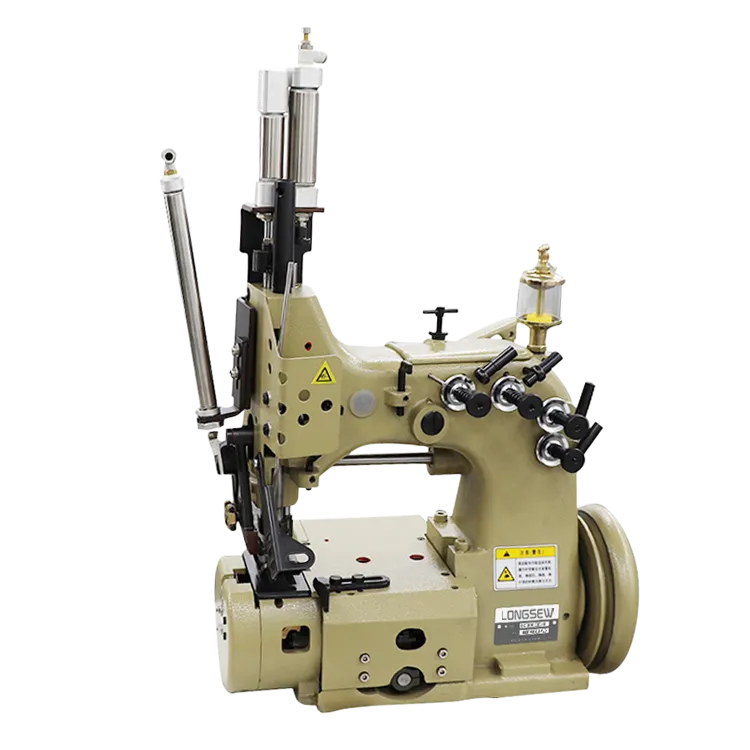rigging sewing machine
The Art and Science of Rigging Sewing Machines
Sewing machines have revolutionized garment manufacturing, crafting a seamless blend of art and science in textile creation. However, the effectiveness and efficiency of these machines greatly depend on one critical aspect rigging. Rigging a sewing machine involves adjusting and setting up various components to enhance functionality, precision, and ease of use. This article explores the nuances of rigging sewing machines, emphasizing its importance for both amateur and professional sewers.
Understanding Rigging
Rigging refers to the process of adjusting the machine’s various parts to ensure it works optimally. This might include tweaking the tension, aligning the needle, adjusting the presser foot, or calibrating the feed dogs. Proper rigging can dramatically improve the quality of stitches, reduce fabric snags, and extend the machine’s lifespan.
Importance of Rigging
1. Precision Stitching One of the primary goals in sewing is to achieve precise, even stitches. If the machine is not rigged correctly, stitch quality can suffer. This can lead to uneven seams, fabric puckering, or skipped stitches, which can be particularly detrimental in professional garment production.
2. Fabric Compatibility Different fabrics require different settings on a sewing machine. For instance, a lightweight chiffon will need different tension settings compared to a heavy denim. Proper rigging allows sewists to adjust their machines to suit the specific characteristics of the fabric they are working with.
3. Equipment Longevity A well-rigged sewing machine operates more smoothly, which can reduce wear and tear on its components. This means less frequent repairs and a longer lifespan for the machine, making good rigging a smart investment for both home sewers and professional tailors.
Steps to Rigging a Sewing Machine
rigging sewing machine

1. Gather Necessary Tools Basic tools might include a screwdriver, scissors, and a seam ripper. Having quality thread and the appropriate needle type for your fabric on hand is also essential.
2. Consult the Manual Every sewing machine is unique, so it’s vital to refer to the user manual. This resource will provide specific guidance on rigging your machine, including how to adjust threading mechanisms, tension settings, and more.
3. Adjust Thread Tension Incorrect thread tension can result in loose stitches or fabric gathering. Use a test piece of fabric to adjust the upper and lower tension until the stitches lie flat and even on both sides.
4. Check Needle Position Ensure that the needle is installed correctly and aligned with the foot. The needle should be at its highest point before tightening the needle clamp to prevent bending or breaking.
5. Set the Presser Foot The presser foot should be appropriate for the type of fabric and sewing technique. For example, a walking foot is ideal for quilting and ensuring layers move evenly, while a zipper foot works best for sewing zippers.
6. Calibrate Feed Dogs Feed dogs control the movement of the fabric as you sew. Adjusting their height and position can help with different fabric thicknesses and sewing techniques, ensuring smoother movement through the machine.
Conclusion
Rigging a sewing machine is an essential skill for anyone interested in textile arts. It combines technical knowledge with hands-on adjustments that can make a significant difference in sewing outcomes. Whether you’re an enthusiast making garments for personal use or a professional seamstress producing high-quality fashion items, mastering the rigging process will enhance your sewing experience. With the right adjustments, your sewing machine becomes not just a tool, but an extension of your creative vision, allowing you to bring your unique designs to life with precision and style.
-
Heavy Duty Leather Sewing Machine: A Must-Have for Professional LeatherworkNewsMay.28,2025
-
Leather Sewing Machine: Essential for High-Quality LeathercraftNewsMay.28,2025
-
Extra Heavy Duty Sewing Machine for Premium Leather ApplicationsNewsMay.28,2025
-
Walking Foot Cylinder Arm Sewing Machine: Precision and Power CombinedNewsMay.28,2025
-
Industrial Cylinder Arm Sewing Machine: Engineered for High-Performance StitchingNewsMay.28,2025
-
Cylinder Bed Sewing Machine: A Powerful Solution for Precision StitchingNewsMay.28,2025
-
Zigzag Sewing MachineNewsMay.12,2025





























